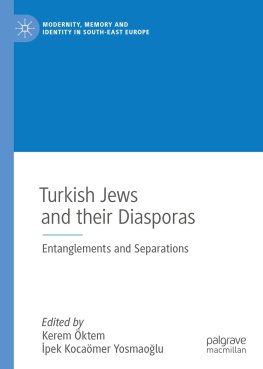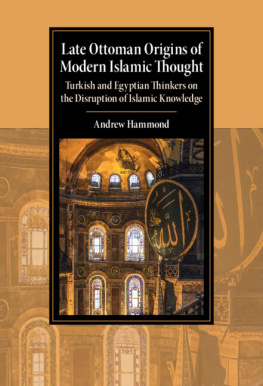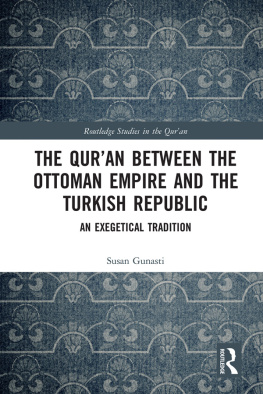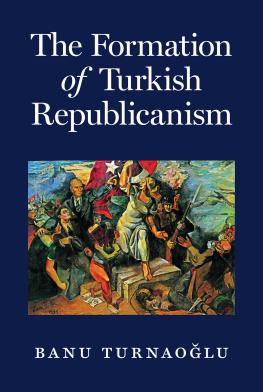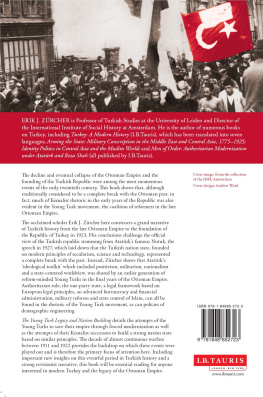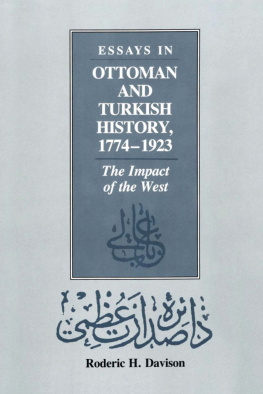FEROZ AHMAD
Feroz Ahmad is Professor of History Emeritus at the University of Massachusetts, Boston. At present he is affiliated to Yeditepe University in Istanbul. His works on the later Ottoman Empire and Modern Turkey include The Young Turks, The Turkish Experiment in Democracy, 1950-1975, The Making of Modern Turkey, and Turkey: The Quest for Identity.
The Young Turk Revolution
T he reasons for the outbreaks of July 1908 and April 1909 in Turkey, which amounted to a constitutional revolution, were complex and varied. Foremost amongst them was the dominance of the court under Abdlhamid, the ruling Sultan. Power was monopolized by a small group around the Palace which took the major decisions of Ottoman politics, but this did not ensure stability and continuity, since grand vezir and ministers could be changed at will; during Abdlhamids reign there were 28 changes at the grand vezir. Apart from the obvious shortcomings, such as intrigues, graft, and peculation, the ineficiency and total absence of stability, the main criticism of this system was that it gave the opportunity to participate in political life even nominally to very few. This, at a time when new forces were emerging, was bound to lead to trouble, and slowly the systems critics united against the Palace; when the crisis came the Sultan found himself isolated, unable to turn to or rely upon any outside interest.
The inefficiency of the system, manifesed most clearly in the countrys finances, led to dissatisfaction in the army and the administration. In both these departments esprit de corps broke down, demoralized by a powerful espionage network which had become the instrument of the Sultans despotism. The aggressive and imperialist ambitions of the Great Powers made the situation worse; there was a fear that Britain and Russia in particular were about to intervene in Macedonia, always a turbulent area, and detach the province from the Sultans control. The meeting of the English and Russian monarchs at Reval in June 1908 seemed to confirm this fear, and this gave an impetus to the revolutionary movement.
These were some of the negative factors which prepared the ground for revolution. On the positive side the Young Turks, as the oppositionists were called, took encouragement from Japans example of reform and progress, and from the attempts in the neighbouring countries of Russia and Persia to establish constitutional regimes. The revolution, long smouldering, broke out on 3 July 1908 and took the form of a demand for the re-establishment of the constitution of 1876, in abeyance since 1878. Abdlhamid capitulated on 23 July and announced that parliament would be convened in accordance with the 1876 constitution. The political stage of the revolution was over; but the struggle for more fundamental changes had scarcely begun.
The antecedents of the Young Turk movement can be traced back to the reforms inaugurate by Sultan Selim III and continued by his successors. The movement reached its zenith in 1876, when the Sultan was forced to promulgate the first formal constitution. But the success of the reformers proved ephemeral and Abdlhamid, whom they had placed on the throne, was able to reverse the situation in 1876 by proroguing parliament and shelving the constitution. Despite this setback, the movement did not die. From their retreats in exile the reformers kept alive the idea of constitutionalism. A new social basis was given to the movement by the changes which were slowly transforming the socio-economic structure of the empire, even though in the political field the status quo remained unchanged. Although the Sultan viewed liberal ideas with hostility and considered them a direct threat to his authority, he realized the necessity of institutional modernization as a means of consolidating his own position and strengthening the empire. Thus, Politics apart, the first decades of Abdlhamids reign were as active a period of change and reform as any since the beginning of the century ... the whole movement of the Tanzimat of legal, administrative, and educational reform reached its fruition and its climax.
One by-product of Hamidian reform was the creation of a new social class, distinct from the traditional elites, with interests in conflict with theirs, and with a much broader base in Ottoman society. Though representatives of this class also spoke the language of liberalism, their demands as events were soon to reveal were not satisfied by political change alone. The were determined to alter not only the political, but also the social and economic structure of the empire in their own favour.
In the last year of the nineteenth century another significant event occurred, namely the desertion of three members of the royal family to the ranks of the constitutionalists in exile. Damad Celaleddin Paa, the Sultans brother-in-law, fled to Paris, taking with him his two sons, Sabahaddin and Lutfullah. Not only did this give a fillip to the flagging spirits of the opposition, but it seemed as if the ruling group was at last beginning to grasp the probable consequences of its misrule.
Abdlhamids timely concession of 23 July robbed the revolution of its raison dtre. The demand for the constitution had been met, and the Sultan even went further to conciliate the constitutionalists by dismissing ministers and replacing them with men of standing and integrity. However, during the first days of constitutional rule, the situation in the empire was highly confused; law and order had broken down and the authorities were unable to function. It was on these grounds that the Committee of Union and Progress (CUP), the political association responsible for the revolution, took charge. No attempt was made to assume power; the Sultan was left on the throne and allowed to rule through ministers of his choosing. It seemed that the Committee was attempting to carry out a revolution with, and not against, the apparatus of the state, no doubt in the hope that, as they gained power and influence, the desired changes would follow naturally. In any case, they lacked the training and experience necessary to take over the administration. More significant, they lacked the social status neessary to make themselves acceptable as leaders of such a traditionally conservative society. Rather surprisingly for revolutionaries, they were aware of their shortcomings but nonetheless too conservative to overcome them. Nor were they unanimous about what to do with their newly acquired power. A minority wanted to use it to the full, but the majority had no desire to carry the revolution beyond its political stage. They had suported the CUP in the struggle against the Palace and now that the struggle was over they considered that the Committee had served its purpose; many of them broke away to form the Ottoman Liberal Party (Osmanl Ahrar Frkas) in September 1908.
The Liberals came largely from the prosperous and conservative elements in Ottoman society, and were socially a cut above the Unionists. They wanted decentralization in government, with virtual autonomy for ethnic groups as in the traditional millet system, and this won them the support of the non-Turkish population of the empire. They favoured a laissez-faire economic system with minimum intervention from the government.
The Unionists, on the other hand, expressed the aspirations of the new social class which had arisen as a result of the reforms of the last quarter of the nineteenth century. Inarticulate and lacking confidence, this class consisted mainly of professional men: teachers, lawyers, journalist, doctors, minor officials, junior officers, and of the depressed artisans and merchants of the towns. The political changes had brought no real advantage to this group, and its members were determined no carry the revolution further.



